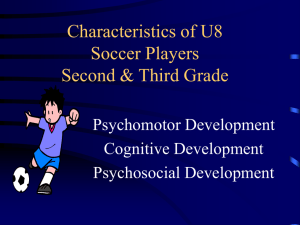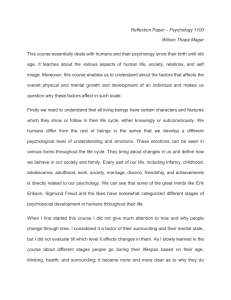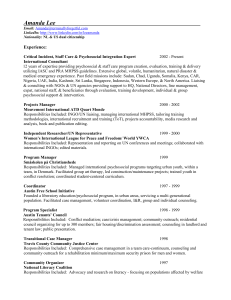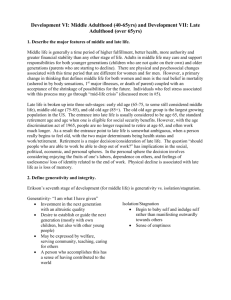File
advertisement
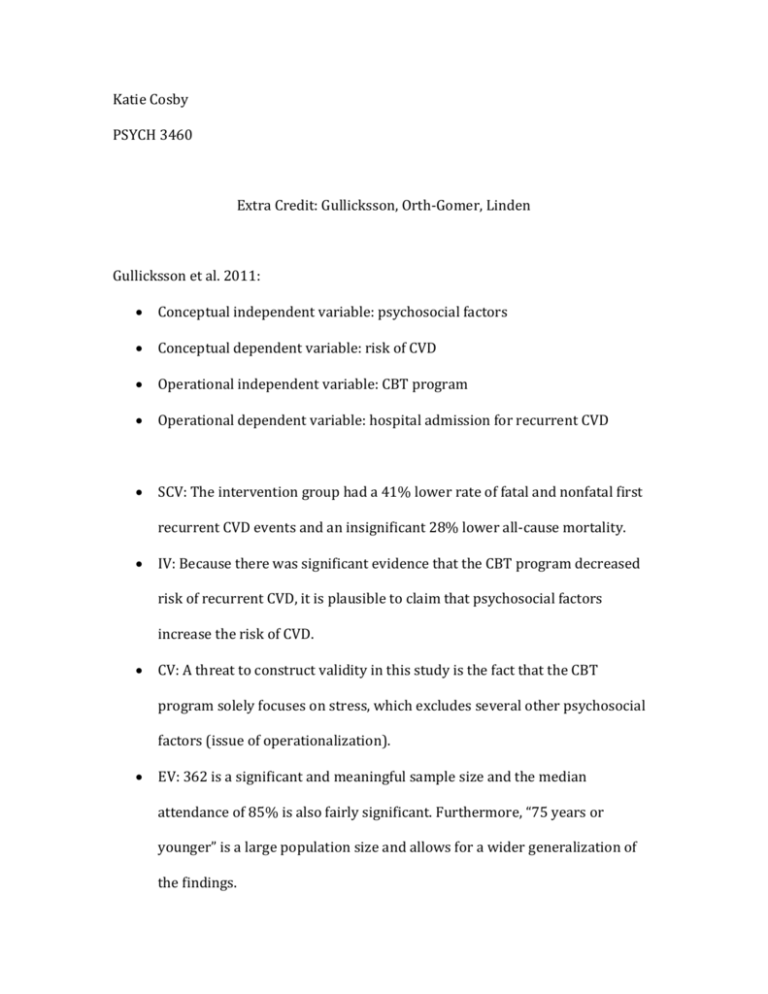
Katie Cosby PSYCH 3460 Extra Credit: Gullicksson, Orth-Gomer, Linden Gullicksson et al. 2011: Conceptual independent variable: psychosocial factors Conceptual dependent variable: risk of CVD Operational independent variable: CBT program Operational dependent variable: hospital admission for recurrent CVD SCV: The intervention group had a 41% lower rate of fatal and nonfatal first recurrent CVD events and an insignificant 28% lower all-cause mortality. IV: Because there was significant evidence that the CBT program decreased risk of recurrent CVD, it is plausible to claim that psychosocial factors increase the risk of CVD. CV: A threat to construct validity in this study is the fact that the CBT program solely focuses on stress, which excludes several other psychosocial factors (issue of operationalization). EV: 362 is a significant and meaningful sample size and the median attendance of 85% is also fairly significant. Furthermore, “75 years or younger” is a large population size and allows for a wider generalization of the findings. Orth-Gomer et al., 2009: Conceptual Independent Variable: Psychosocial stress Conceptual Dependent Variable: Prognosis of CHD in women Operational Independent Variable: Stress Reduction Program Operational Dependent Variable: Mortality Rate SCV: Women in normal care had a mortality rate of 20% while women who also received psychosocial intervention had a mortality rate of 7%. Because of this significant decrease in mortality rate, the variables appear to be statistically related. IV: Because there was a significant decrease in mortality rate among women who received psychosocial intervention, it is plausible to suggest that psychosocial stress increases the risk and severity of CHD in women. CV: Psychosocial stress is proven to be managed through stress reduction programs, so I do believe this operationalization reflects the initial variable. The prognosis of CHD however, is not always reflected in mortality, so I believe the operationalization of the dependent variable could’ve been improved. EV: 237 is a meaningful sample size, so the findings could be generalized to other populations. However, these findings are most likely only reflective of the female population due to the sample being entirely composed of women. A. Patients hospitalized for CHD Patients will be admitted to the program based on their age (under 70), severity of condition (below emergent), and comorbidities (2 or less). The program will require attendance to educational classes once every other week. These classes will provide information on relaxation techniques, stress management, and self-monitoring techniques. Also, once a month, the patient will receive one-on-one training that centers on implementing the practical aspects of the educational classes. In the instance that a patient has to undergo surgery or is subject to an invasive test, their one-on-one “mentor” will be present before and after the procedure to aid in lessening negative psychosocial factors. B. Patients continuing on to cardiac rehabilitation Patients will be admitted with the pretext of certain absence/presence of habits: no smoking habits, minimal alcohol consumption, moderately to extremely healthy diet, at least one hour of exercise per week, etc. The program will require attendance to educational classes once per month and attendance to small-focus groups once per month. The educational classes will allow attendance for 100 people and focus groups derived from this large group will consist of 5 people each. The large class will center on relaxation techniques, stress management, and self-monitoring techniques. The focus groups will be largely self-governing and will decide independently which topics are relevant to discuss in further detail. Program Prospectus: The program proposed for patients hospitalized for CHD focuses on addressing psychosocial issues that may worsen CHD. Many studies have shown significant decreases in mortality rates amongst patients who undergo psychosocial programs in addition to normal care. The classes that the patient will be required to attend are occasional and brief – making them very low maintenance and easily manageable for the patient. In addition to these classes, the patient will receive oneon-one training for a more personalized experience. Also, providing a “mentor” for the patient during especially stressful situations such as pre-surgery prep, will lessen complications that could derive from heightened stress and anxiety. The program proposed for patients who are continuing on to cardiac rehabilitation are also manageable for individuals because they are brief and occasional. Also because there are certain requirements for being admitted to the program, the patient will be encourage to discontinue unhealthy practices in order to receive the psychosocial assistance. The patient will receive overarching knowledge through large classes and more individual-based knowledge and information through small, focus groups. Because of the proven positive affects that psychosocial programs have on the severity, recurrence, and mortality rates of CHD, this program should be included in a patient’s coverage. This program has the potential to reduce further medical complications and expenditure, therefore acting as a preventative measure that is significantly beneficial in the long-term consideration of the patient’s care and financial burden.

